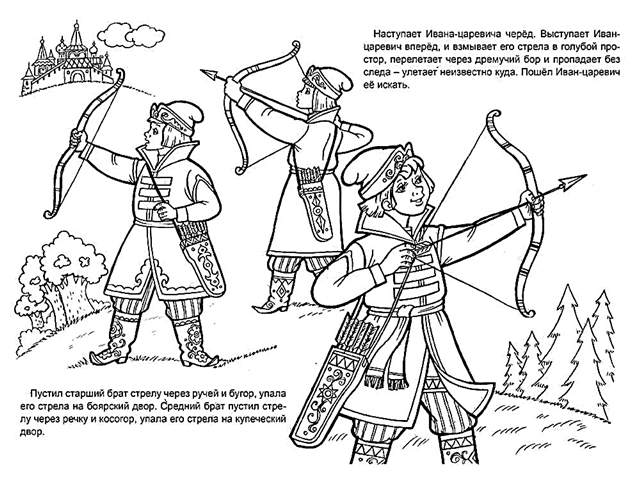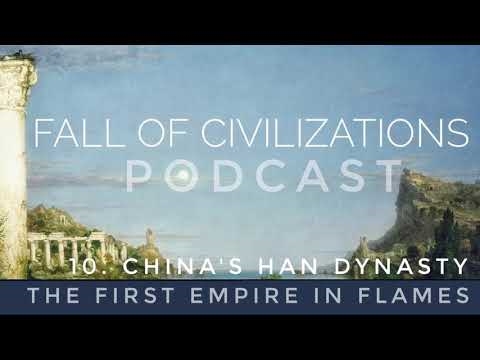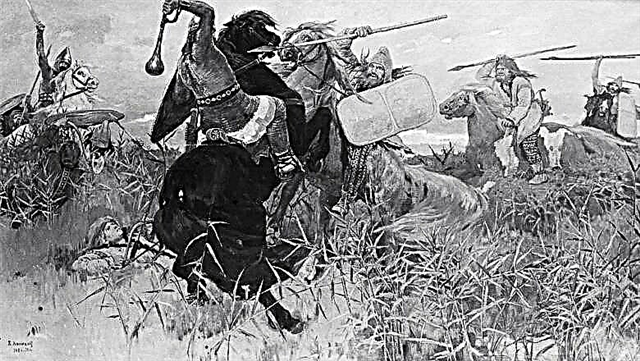Probably one of the most popular and most insoluble questions of mankind is the question of the meaning of life. Every day, we all plunge into everyday bustle: work, home, study. And in this whirlwind, we have no time to reflect on the eternal questions of being. But as soon as we stop for a moment, look around, these very questions arise before us as an insoluble community. The sensations of a man who is trying to comprehend the nature of the universe and the secret of his fate were perfectly conveyed by the great Russian poet Alexander Pushkin, in his work “Do I Wander Along the Noisy Streets ...”.
History of creation
The poem "Do I wander along the noisy streets ..." was created by the poet in 1829. By this time, the author was 30 years old. Already held as an artist of the word, Pushkin did not find satisfaction in his life. He was weighed by thoughts about the fate of the fatherland, the obligation to work in an unloved service. Secular life and the censor in the person of Nicholas I did not help, but repaired the poet's work. More often, Alexander Sergeyevich began to turn to philosophical problems. And 1829 is rich in works of this kind.
The poem “Am I wandering along the noisy streets ...” in 1830 in the Literary Newspaper was published. In the first edition, the work carried a more direct message. The author wrote that the thought of death haunts him wherever he is. In the final version, the motive of imminent death is softened, the author gave place to the bright feelings of eternity of life, because the poet lives in the hearts of people for centuries.
Genre, direction, size
The poem "Do I wander along the noisy streets ..." refers to philosophical lyrics. Here the author addresses the eternal questions of life and death. The genre of the work, characteristic of the “romanticism” trend, in the mainstream of which Pushkin partially worked, is an elegy. In the text we see deeply personal experiences and thoughts of the hero, imbued with the motive of sadness.
The atmosphere of quiet, calm dreams of the lyrical hero is transmitted through the rhythmic structure of the work. A.S. Pushkin uses a cross type of rhyme, which makes the poem smooth and measured. The size of the work is a four-foot iambic with a pyrrhic. Such a “structure” of the verse helps the reader to plunge into the inner world of the lyrical hero, acting on him like a kind of trance.
Composition
The poem is a lyrical monologue. The hero in the first person tells about himself and his inner feelings. From this, the pronoun "I" is often found in the work. Personal experiences are at the center of the elegy composition.
The poem consists of eight quatrains:
- In the first four quatrains, the lyrical hero tells that with any action, wherever he is, he is tormented by one question - the finiteness of all living things, primarily the finiteness of his life.
- In the second part, the last four quatrains, the hero seems to be reconciled to the inevitable death. He is already thinking about how and where this will happen. He is reassured that life itself will go on, it is infinite, and therefore stronger than death.
Images and Symbols
At the center of the story is the inner world of the lyrical hero. We see, as it were, two manifestations of it: external and internal. The narrator himself tells us about this duality: there is noise and fun around him, a society of friends and compatriots, and although he speaks to them, he is far away mentally, thinking about the eternal questions of being. The surrounding light-heartedness contrasts with the inner tension of a person burdened with heavy thoughts. Outwardly, he behaves as usual, without showing that a complex dilemma is occurring inside him.
The hero of this work can be called a strong man, because he reconciled with the inevitable, he was able to find the strength to see in his position the bright beginnings. So, the child becomes a symbol of new life. Yes, the hero himself will leave, but the flow of life will not end there. At the end of the work, an image of nature appears that will “shine with eternal beauty”. The secret of the power of this nature is that every piece of nature before death leaves offspring that will continue the work of their ancestors. So a man, according to Pushkin, should bring to light an heir, in him he will be reborn for a new day.
Themes and Issues
- The philosophical theme of the work makes the reader think about a lot. We begin to rethink our life in a different way. The main theme of the poem is the question of being and death, which is resolved by the lyrical hero in favor of the first. We will all find a continuation in our descendants, nothing and no one will pass without a trace.
- In addition to the theme of the infinity of life, in the work the author also touches on the problem of fate. So, the lyrical hero wonders where he is destined to find death. That is, the human future is dark, you never know what will happen to you tomorrow. From this follows the theme of the mystery of the future, which everyone wants, but cannot recognize.
- The author also addresses the theme of the homeland. The lyrical hero resigns himself to death, but he has one single desire for him to fall asleep in his country with an eternal sleep. This suggests how patriotic the author himself was. Despite the tense relations with the authorities, the open hostility of the tsar and the rejection of social reality by the poet himself, Alexander Pushkin loved the fatherland and was rooting for him.
Idea
The main idea of the poem is that being has no end. In a global sense, death is only a stage in the change of one generation to another. Life is infinite, how infinite is nature, its beauty, how infinite is humanity itself. The old tree dies, but in its place new trees grow, which are stretched from its seeds.
The meaning of the work is revealed in the fact that the hero does not try to fight the inevitability, does not scream or grumble. He resigned himself to the finite nature of his existence and admired the immortality of life itself. He denies the selfishness of a person who is limited to thoughts only about his body, which does not care about the world and its development. Moral and smart people should think ahead and welcome the changes in the face of new generations that need to be given the way.
Means of artistic expression
The poet reveals the complex theme of life and death through various means of artistic expression. One of the key is the antithesis: death is opposed to life, the external side of the life of the hero - his inner experiences, the finiteness of human life - the infinity of the natural world.
In addition, the author uses such a syntactic tool as rhetorical questions, which is characteristic of philosophical lyrics. Since it is precisely the questions that make the lyrical hero reflect, come to any conclusion.
The poet also includes in his work metaphors (“the patriarch of forests”), personifications (“indifferent nature”), epithets (“crowded temple”, “eternal vaults”). All this helps to convey the contrast between the external and internal life of the hero.



 Good strategy, bad strategy
Good strategy, bad strategy







